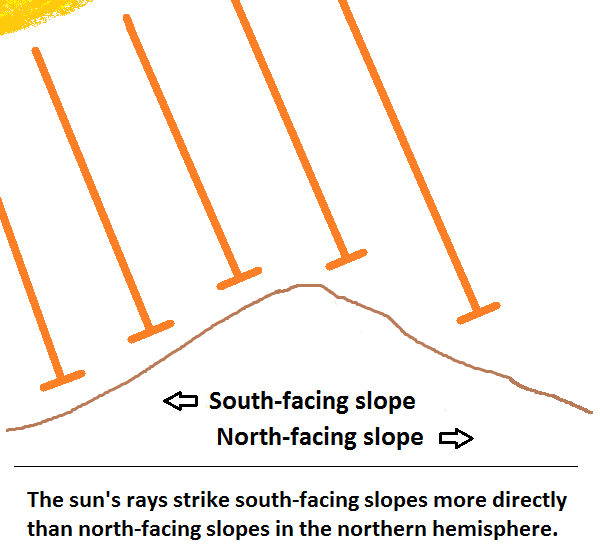Topography creates differences in climate across very small distances. These differences in temperature, moisture, and exposure to wind and sun are called microclimates, and they are important predictors as to where various natural communities can be found.
For example, a windy hilltop with high evaporation and transpiration will tend to have a drier microclimate than a nearby sheltered ravine. Consequently, you’ll find plants on the ridge that can tolerate windy and dry conditions. In the ravine, you’ll find plants that prefer less windy and more moist conditions.
 South-facing slopes will tend to be sunnier and drier than nearby north-facing slopes. That’s because the sun is always in the southern sky for those of us in the northern hemisphere. (It is never directly overhead, but always slightly to the south—even at high noon.) The sun’s rays strike a south-facing slope more directly than they strike a north-facing slope.
South-facing slopes will tend to be sunnier and drier than nearby north-facing slopes. That’s because the sun is always in the southern sky for those of us in the northern hemisphere. (It is never directly overhead, but always slightly to the south—even at high noon.) The sun’s rays strike a south-facing slope more directly than they strike a north-facing slope.
This explains why snow melts away faster on south-facing slopes than on north-facing ones. It also explains why you’ll find plants adapted to sunny, drier conditions and warmer temperatures on south-facing slopes, while nearby north-facing slopes may contain plants suited to more shade, moisture, and cooler temperatures.


